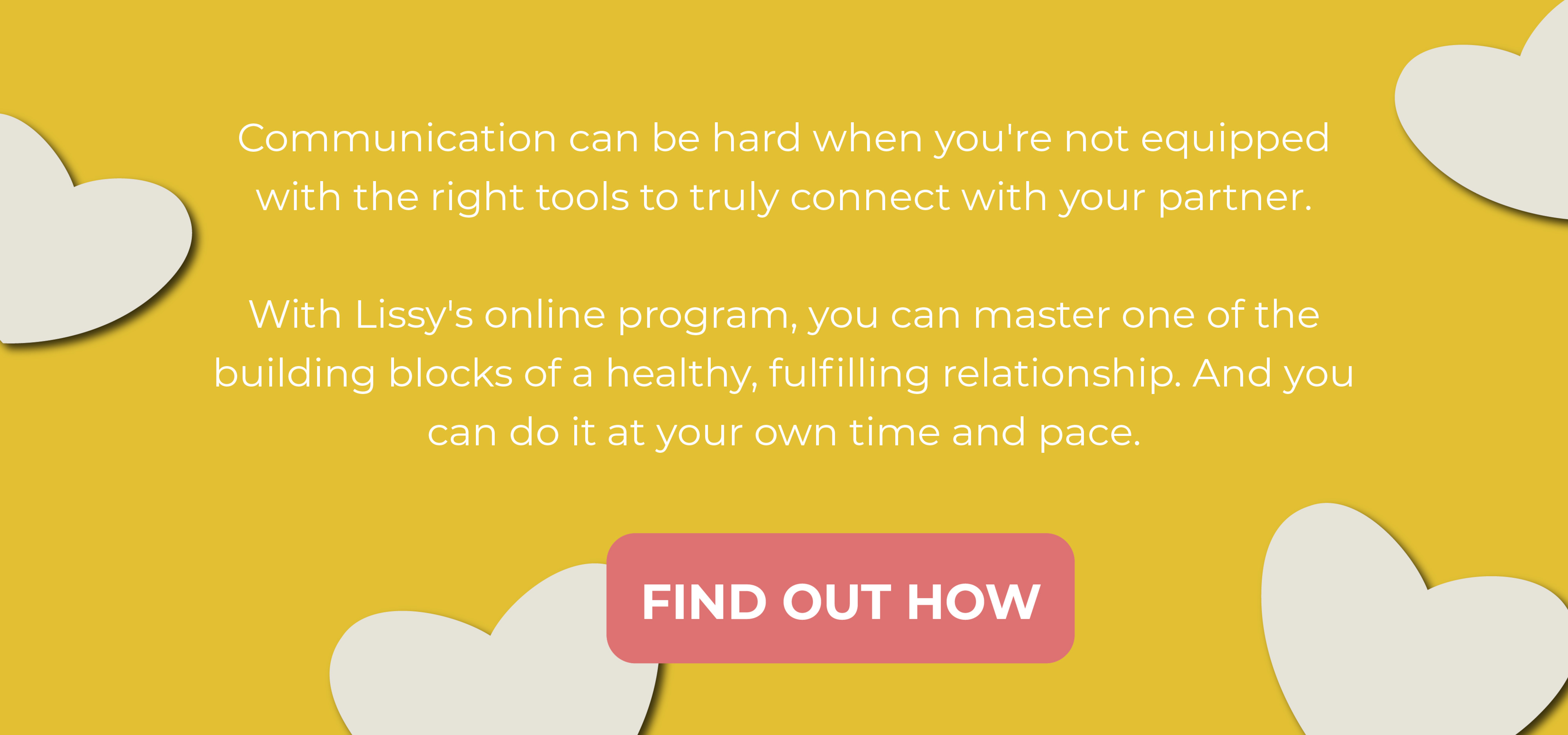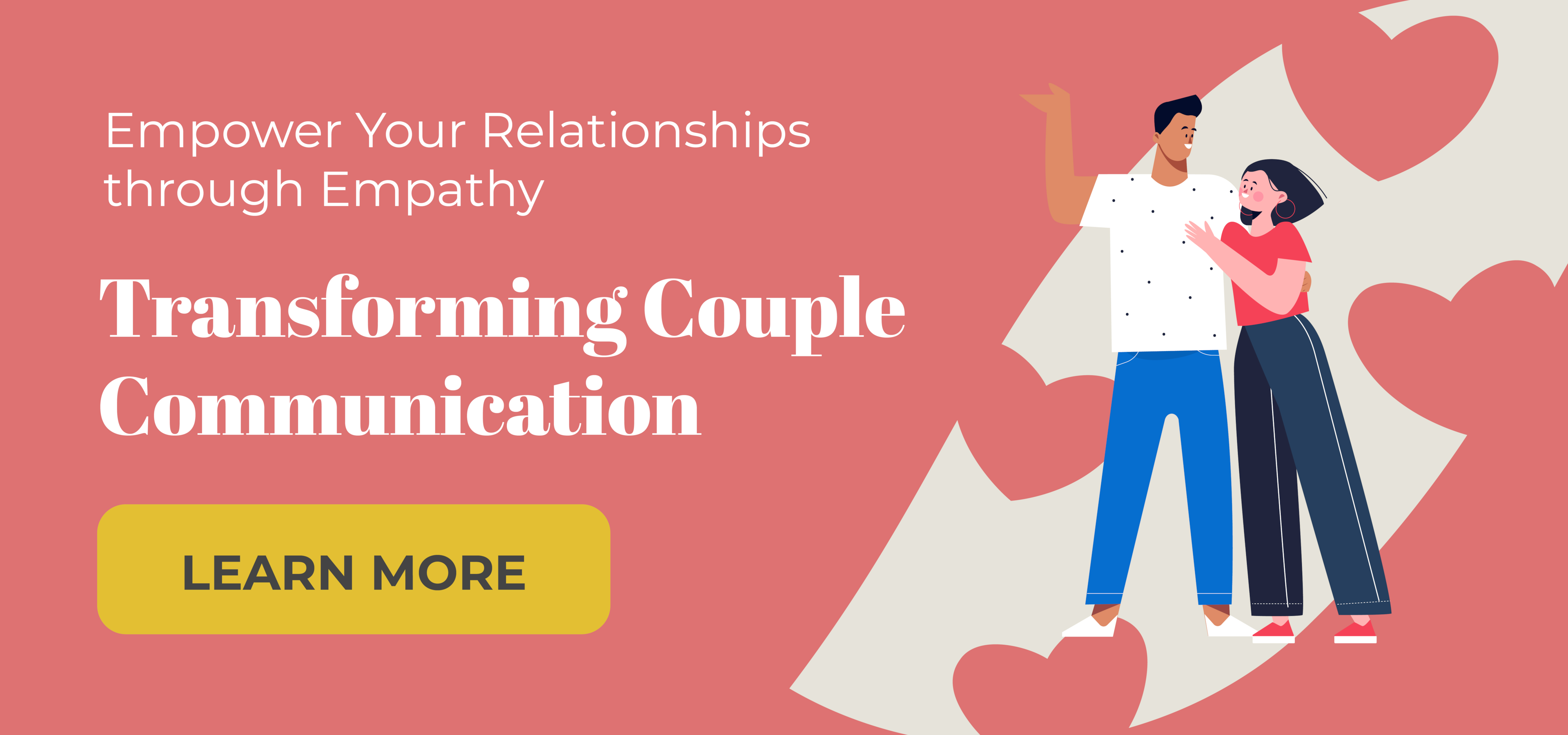Empathetic Communication: The Key to Stronger Bonds

Have you ever been in a conversation where the other person seemed uninterested or repeatedly didn't grasp your point? Chances are you felt unheard and possibly frustrated. Now picture a scenario where the person truly understood your feelings and perspective – wouldn't that completely transform the conversation? This exemplifies the power of empathetic communication.
Whether its resolving conflicts, repairing relationships, or building connections – empathetic communication plays a crucial role. By immersing ourselves in understanding others' emotions and viewpoints we create an atmosphere of trust, honesty, and mutual understanding. What exactly is empathic communication? How can it revolutionize our relationships?
In this article, we will explore the world of communication – its benefits, challenges and practical applications. I aim to provide you with knowledge, valuable insights, and effective strategies to nurture more affectionate relationships and enhance your own experience.
Whether your goal is to rebuild bridges or strengthen existing bonds when communicating, get ready for new perspectives. Let's embark on this journey towards transforming relationships with more empathy as we understand the true power of standing in another's shoes.
The Importance of Empathy in Communication
Understanding the full breadth of empathic communication requires delving into both its historical roots and contemporary significance. It transcends mere understanding of another person's perspective or echoing their emotions, it's also about demonstrating genuinely caring for how a person feels, understanding them, having eye contact, and being fully present.
Historically, empathy was predominantly associated with therapeutic contexts. Carl R. Rogers, a notable psychiatrist and the pioneer of person-centered therapy, underscored empathy as a crucial element in therapeutic interventions.
Rogers highlighted the transformative power of empathy in understanding and addressing clients' emotional states. This concept of empathy, originally confined to therapy, gradually expanded its relevance across various facets of life.
Today, empathic communication is recognized as a vital component in all interpersonal relationships and professional interactions. In our increasingly diverse world, where differences in norms, personal experiences, and belief systems are more pronounced than ever, empathic communication serves as a bridge that spans these divides. It fosters an atmosphere of understanding, respect, and mutual trust, crucial for resolving misunderstandings and averting conflicts.
Research has consistently shown that empathic communication is instrumental in building stronger, healthier connections. Studies indicate that when individuals feel understood and valued, it leads to more positive interactions and outcomes in various settings – from personal relationships to professional environments. A study published in the Journal of Clinical Psychology even highlighted the role of empathy and attending to a patient's feelings in enhancing patient care and outcomes in medical settings.
Next, I will reveal vital facets of empathic communication, its advantages for personal growth, and its role in fostering healthy relationships. I will also offer strategies to enhance your communication skills.
Understanding another's perspective is just the beginning. Stay with me as we journey through the realms of insight, transformation, and deeper connection, guided by the principles of empathic communication.
Establishing the Foundation: The Essence of Empathetic Communication

When communicating, human beings can lose respect for their listener when they're more concerned with themselves, busy focusing elsewhere, or they have no ability for cultivating empathy. This can be felt when a partner lacks support, or when CEOs worry about not being taken seriously, or dealing with an off-putting neighbor's communication style.
This can occur in any relationship, and it typically opens a pandora's box of emotional reactions. We all expect and want to be listened to respectfully.
To communicate well and support another human being, we need to stand in an other person's shoes – and learning this will require emotional effort.
The Foundation of Empathic Communication
Empathic communication is more than exchanging words. It's about comprehending, respecting, and authentically connecting. It means actively listening, not just hearing. This kind of communication involves sensitivity in responding, acknowledging another's feelings, and validating their experiences.
It's less about solving problems and more about having empathy, establishing rapport, and offering understanding and support. Empathy in communication is key for de-escalating conflicts and nurturing relationships, as it allows us to see things from another person's point-of-view, unlike sympathy, which is more about offering pity or sorrow for others.
Case Study
Barb, an HR professional at a well-established photography company, noticed a significant decline in employee morale. Determined to understand the underlying issues, she initiated a series of meetings to actively listen to the staff's concerns. During these discussions, Barb practiced self-awareness and empathy, ensuring she fully comprehended the words and feelings of each employee. Despite this being emotionally exhausting for Barb, she was giving empathy and also modeling this for her employees.

Through these conversations, Barb discovered that the employees felt the company's internal communication was lacking in empathetic engagement. By putting herself in her colleagues' shoes, she realized that the company culture was becoming emotionally taxing, predominantly due to ineffective communication and a shortfall of expressed empathy.
To tackle this, Barb reassessed their communication tool document and devised a strategy to fine-tune all internal communication. Her plan emphasized the importance of constructive conversations and strengthening empathic communication skills among staff. This initiative was designed to rejuvenate the workplace environment, making it more emotionally supportive and conducive to open communication.
Components of Effective Empathy
Empathic communication is built on three pillars: active listening, emotional understanding, and responsive expression. It extends beyond words to include body language, tone, and context, requiring self-awareness and the ability to understand the other person's perspective. It's about making them feel heard and valued.
Understanding is recognizing and empathizing with emotions. This is not about agreeing with them but comprehending their source and significance. Responsive expression is a feedback loop in communication, where affirming and clarifying responses show that you understand the person's feelings and viewpoint.

Case Study
Megan, a hospital nurse, was dealing with a patient with an acute medical problem. She realized that her patient was afraid, and this altered her way of responding to them.
Megan understood the importance of empathy in her bedside manner, as a frightened patient needs to know they are able to express themselves and have a listener who is available and responsive. She started by trying to understand the patient's perspective and feelings.
Despite the global crisis straining the healthcare system and being understaffed, Megan always made an effort to convey empathy to patients in her care. She used nonverbal communication like maintaining eye contact and showing concern. This approach not only helped in addressing the patient's plight but also ensured that the patient feels valued and understood.
Megan's ability to communicate with empathy transformed this interaction, making her patient feel more at ease despite their condition.
Empathy in Action
Applying empathic communication can profoundly impact relationships in various situations. It's about more than just improving communication – it's about transforming interactions.
Whether in personal or professional settings, showing empathy takes effort and can sometimes be emotionally exhausting, but it ultimately leads to stronger connections and improved well-being. In the workplace, for example, HR professionals can use empathy to understand employees' concerns, and in personal relationships, it helps in finding common ground and enhancing the bond.
Incorporating these sections maintains the essence of the original content while organizing it into distinct, focused areas, each addressing a different aspect of empathic communication.
Case Study
In a large American plumbing company, John, the team leader, observed a significant lack of effective communication among his team members, who came from diverse cultural backgrounds. Recognizing the need for improvement, John decided to organize a workshop focused on workplace empathy and empathic communication.
The workshop included various interactive activities designed to engage team members in understanding and practicing empathic communication. One key exercise involved team members describing what it feels like to walk in another person's shoes. This activity emphasized the importance of understanding and acknowledging another person's feelings and perspectives.
John actively encouraged his team to practice self-awareness, highlighting the fact that not everyone shares the same experiences or viewpoints. He stressed the importance of recognizing and respecting these differences in a professional setting.
This exercise in empathy turned out to be a pivotal moment for the team. It significantly improved their overall well-being and fostered a sense of common ground and understanding. John's initiative helped bridge the team's gap in communicating well, enhancing their collaboration and overall efficiency in the company.
The Influence of Empathic Communication: Examples in Daily Life

Family Dynamics
In family life, misunderstandings due to different perspectives are common. Employing empathic communication can effectively bridge these gaps. For example, when a teenager discusses feeling overwhelmed with schoolwork, a parent's empathetic responses - listening, validating their feelings, and collaboratively finding solutions - can strengthen the parent-child relationship, reduce tension, and foster mutual respect.
Customer Service

Empathic communication is crucial in customer service. Consider a scenario where a customer is upset about a delayed delivery. A customer service representative using empathic communication would acknowledge the customer's frustration, offer a sincere apology for the inconvenience, and work towards a resolution. This approach often results in customer satisfaction and loyalty to the brand.
Team Collaboration
In a professional environment, empathic communication is key to enhancing team collaboration. Take, for example, a project team experiencing conflicts. By incorporating empathy – understanding colleagues' viewpoints, appreciating their strengths, and navigating disagreements respectfully – team members can improve collaboration and drive successful project execution.
Therapeutic Settings

In therapeutic environments, empathic communication plays a pivotal role. A therapist using their skills can make a client dealing with anxiety feel understood and less isolated, fostering a conducive environment for the therapeutic process.
In each of these scenarios, empathic communication leads to feelings of validation, relief and instills a sense of being valued. Consistently applied, it has the transformative power to improve relationships and interactions significantly, impacting both personal and professional spheres.
Effective Communication: Tips for Practicing Empathy
Embarking on this journey can be challenging, but its potential to strengthen relationships is immensely rewarding. To effectively integrate empathic communication into your daily interactions, consider these practical and straightforward tips:
1. Respect Individuality
Recognize that each person is unique, shaped by their experiences and perspectives. When beginning a conversation, it's crucial to acknowledge this diversity and approach their viewpoint with an open and understanding mind.
2. Active Listening

Active listening is more than waiting for your turn to speak. It involves genuinely absorbing and understanding what the other person is saying. Communication is a balance of both attentive listening and thoughtful speaking, with a strong emphasis on the listening aspect.
3. Validate Experiences and Emotions
When someone shares their emotions or experiences, it's important to acknowledge and validate them. Letting them know that you understand and empathize can be comforting. To communicate like this offers them emotional support. A simple phrase like "I can imagine how challenging that must be for you" goes a long way in expressing your empathy.
4. Avoid Interruptions
Create a judgment-free space for the person to express themselves fully. Allowing them to speak without interruptions not only helps in understanding their perspective better but also demonstrates your empathy towards their feelings.
5. Reflective Responses
Utilize reflective responses to mirror the speaker's emotions. For instance, a comment like "It seems like work is really stressing you out now" can show that you are actively engaged and empathetic to their situation.
6. Patience and Practice
Like any skill, empathy develops with consistent practice. Be patient with yourself as you hone this skill. Over time, you'll notice significant improvements in your ability to empathize and connect with others.
Remember, empathic communication is not solely about understanding other people's perspectives - it's about effectively conveying your understanding and fostering deeper, more meaningful connections.
Starting with small steps and practicing regularly can lead to profound changes in your relationships. This foundational approach sets the stage for empathic communication in various settings, including corporate environments.

Empathic Communication in a Corporate Setting with a Practical Approach
At a multinational corporation, CEO Gemma Mitchell was concerned about the lack of empathic communication among her employees. She noticed that the company culture was suffering due to poor communication, leading to a loss of respect and motivation among staff.
Her approach

To address this, Gemma decided to repair the company's approach to communication. She started by conducting workshops facilitated by HR professionals focusing on cognitive empathy and the importance of putting oneself in another person's shoes. The workshops included exercises to express empathy and actively listen.
Implementation and Teaching
During these sessions, employees were encouraged to:
-
Respect Individuality: Acknowledge the unique experiences and perspectives of each person.
-
Active Listening: Emphasize listening over speaking, absorbing what the other person is saying.
-
Validate: Acknowledge others' emotions or experiences.
-
Avoid Interruptions: Create a space for others to express themselves without judgment.
-
Reflective Responses: Reflect the speaker's emotions.
Employees were taught that empathy takes time and emotional effort. The training emphasized the importance of understanding the other person's words and perspectives. This meant going beyond mere words to the tone of voice and non-verbal cues.
Outcome
Over time, there was a notable improvement in workplace communication. Employees began to feel engaged and valued, leading to a more empathetic work environment. Gemma's approach to communicating empathically within the workplace not only improved team collaboration but also enhanced their overall well-being.
Reflection
This case study highlights the importance of empathic communication in a corporate environment. It demonstrates that with enough training and the right approach, it's possible to cultivate a culture where empathy is at the forefront of communicating. The practical approach of navigating empathic communication not only strengthened relationships within the company but also served as a model for other organizations to follow.
Delving Deeper: Empathic Communication Skills
If you want to delve into the topic of empathetic communication, have a look at:
1. "The Art of Empathy: A Complete Guide to Life's Most Essential Skill" by Karla McLaren - McLaren explores empathy as a skill that can be developed and its impact on personal and professional relationships.
2. "I Hear You: The Surprisingly Simple Skill Behind Extraordinary Relationships" by Michael S. Sorensen - Focuses on the power of validation in building strong, empathetic connections.
3. "Emotional Intelligence: Why It Can Matter More Than IQ" by Daniel Goleman - This book discusses the role of emotional intelligence and empathy in success and human interactions.
4. "The Power of Empathy" by Dr. Brené Brown - A renowned talk on understanding the distinction between empathy and sympathy.
5. "Empathetic Listening" by Stephen R. Covey - A segment explaining the importance of empathetic listening in effective communication.
6. "The Secret to a Happy Relationship Is Empathy" (Published in Psychology Today)
7. "Empathy at Work – Developing Skills to Understand Other People" (MindTools) - An article discussing the significance of empathy in the workplace and how to develop empathetic skills.
These resources cover a broad spectrum of empathetic communication, from personal relationships to professional settings, providing valuable insights and practical advice.
Frequently Asked Questions: Exploring Empathetic Communication
How can you demonstrate empathy in communication?
Demonstrating empathy in communication involves actively listening, comprehending, and validating others' feelings and perspectives. It requires being fully present in conversations, accurately responding to the emotions expressed, and avoiding judgment or unsolicited advice.
What does empathetic communication mean?
Empathetic communication is the practice of deeply connecting with others during interactions. It's not just about understanding one's own emotions but also recognizing and respecting the emotions of others. This form of communication is essential for building meaningful relationships.
Why is empathy important in communication?
Empathy is crucial for communication as it fosters understanding, trust, and respect. It enables us to view situations from another person's perspective, aiding in problem-solving and strengthening relationships. Without empathy, communication risks becoming one-sided and ineffective.
How can we practice empathetic communication at work?
Fostering empathetic communication in the workplace involves developing listening skills and validating colleagues' experiences and emotions. Respecting diverse opinions and paying attention to verbal and nonverbal cues are important for reflective responses that demonstrate understanding.
Cultivating an open and trusting environment is vital. This means employees feel comfortable expressing themselves without fear of judgment. Additionally, organizing training sessions and workshops can further enhance empathetic communication skills in a professional setting.
The Journey of Empathetic Communication
Together, we've delved into the concept of empathetic communication, recognizing its vital role in enhancing relationships. Our discussion extended to its various applications in everyday scenarios, and we've provided strategies for integrating empathetic communication into daily life.
Remember, developing this form of communication is a continuous journey of understanding and connecting with others, offering a path to transform relationships and build stronger emotional bonds.
Enhance Your Communication Skills with Lissy Abrahams
Psychotherapist and relationship expert Lissy Abrahams is committed to helping you elevate your communication to a more empathetic and profound level.
Her comprehensive programs, crafted to blend insight and strategies with practical skills, aim to transform your relationships and foster deeper connections. By participating in these learning experiences, led by Lissy herself, you'll gain the expertise to shift how you interact and relate to others positively.
Don't miss this opportunity to empower your relationships with enhanced empathy. Take the initiative and invest in your future by checking out the Transforming Couple Communication Program today.



